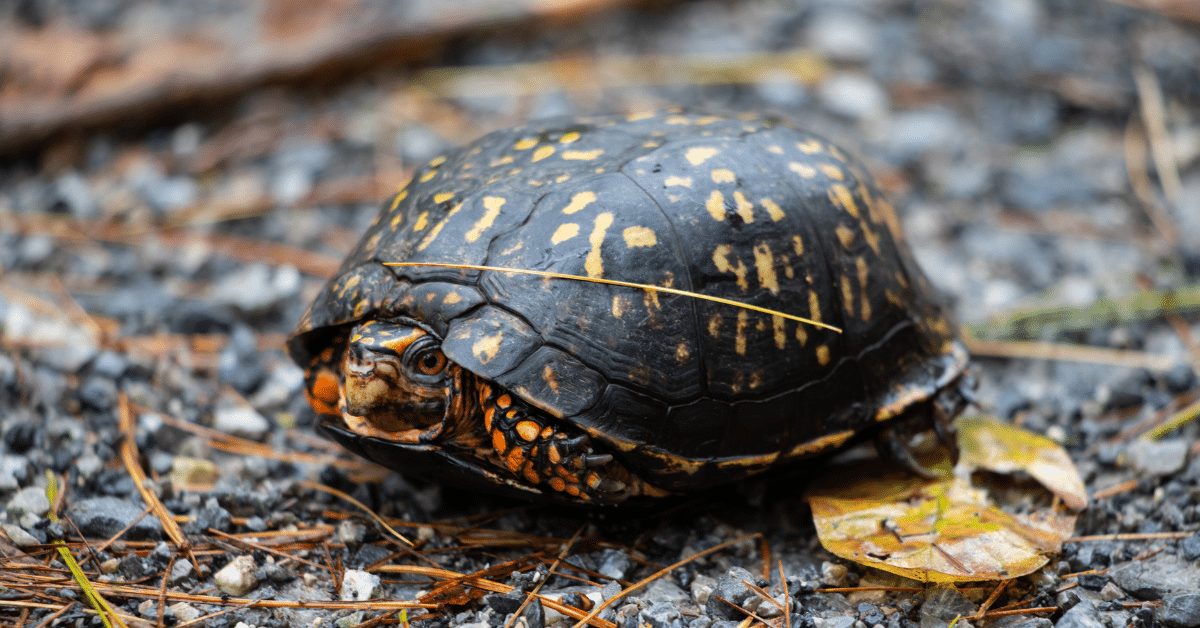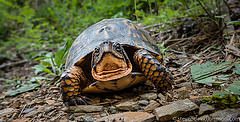
What Drivers Should Do if a Turtle is Crossing the Road
You’re driving, and you spot a turtle crossing the road. What should you do?
Hey there turtle friend! What brings you to this busy road?
As Virginia’s natural habitats become increasingly fragmented, many of our wildlife species are left with no choice but to venture onto roads, putting them at great risk of being injured or killed by cars. The warm summer months and into the early fall are when our turtle friends, often females searching for a safe place to lay their eggs, find themselves making dangerous road crossings. Turtles’ slow and steady pace makes them extra vulnerable to collisions. By being a cautious driver and knowing what to do if you come upon one of these lovable slow pokes, you can help protect Virginia’s turtles!
Turtle spotted – what should you do?
The first step when you spot a turtle is to slow down, put on your hazards or turn signal, and make sure that you are in a safe place to pull over and get out of your car. Once you have ensured your own safety, you can focus on the turtle!
You may come across an eastern box turtle with their classic orange and yellow markings (as shown below), or maybe the turtle looks a bit bigger with a longer tail and scary (rightfully so!) hooked jaw. In that case you have likely come across a snapping turtle! Both would love your help in getting safely across the road to the other side.

The most important rule when helping a turtle out is to keep it moving in the same direction it was already headed! Even though it might seem safer to place them further away from the road, never relocate a turtle or turn it around. They know what they are doing! They are smart little guys, and have small home ranges of often just a few acres that they are familiar with. By relocating them or turning them around, they can get confused and disoriented, which poses a real threat to their survival.
When moving a turtle across a road, it’s best to minimize handling of it. If there is not oncoming traffic and the turtle is still on the move, you can simply keep it safe while it makes its own way across to the other side. If this isn’t possible, one super smart suggestion from the U.S. Fish and Wildlife Service is to use one of your car floor mats as a sort of turtle magic carpet! You can let them walk onto it, or gently pick them up by the middle of their shell, and slide the mat across to the other side. This method rescues the risk of dropping the turtle or handling it too much, and could be especially helpful if dealing with snapping turtles.
If you notice that the turtle looks sick or injured, you can call the Wildlife Center of Virginia to discuss the next steps for getting the turtle care. Be sure to note the exact location of where you found the turtle so that it can be returned to the right home after it is happy and healthy!
Want to do more?
You have successfully helped a turtle cross the road- congrats! You’re already a hero in the mission to preserve and protect Virginia’s wildlife. If you’re enthusiastic about efforts to improve turtle crossings and wildlife corridors, consider getting involved with the habitat connectivity efforts here at Wild Virginia. By supporting and participating, you can learn more about legislation affecting ecological connectivity and safe wildlife crossings and play a more significant role in the effort to save our wildlife, including the slow and steady turtles!